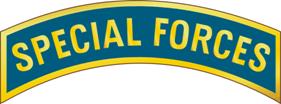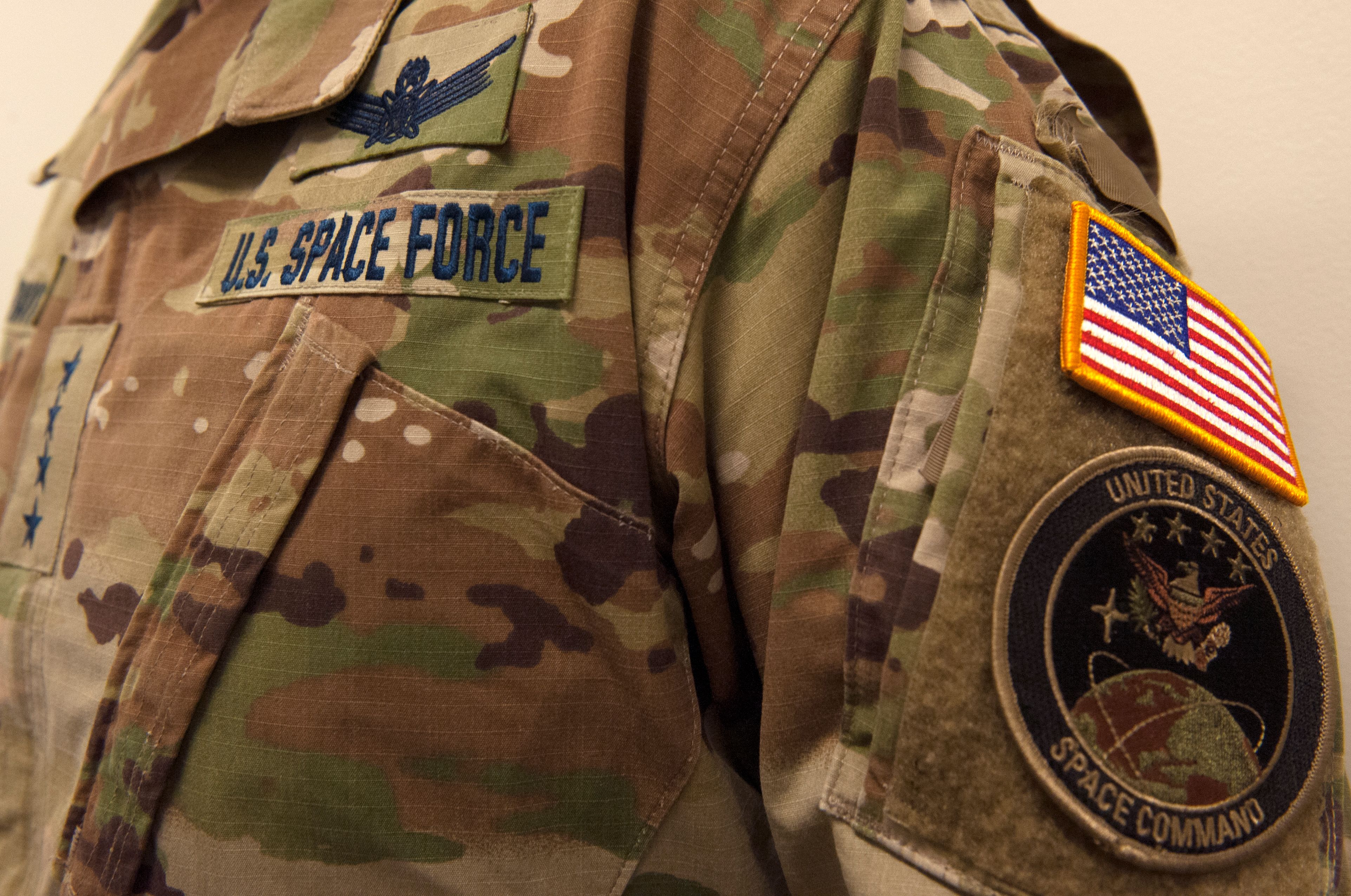|
ACU Uniform
The Army Combat Uniform (ACU) is the current combat uniform worn by the United States Army, U.S. Air Force, and U.S. Space Force. Within U.S. Air Force and U.S. Space Force, it is referred to as the OCP (Operational Camouflage Pattern) Uniform, rather than the Army Combat Uniform. First unveiled in June 2004, it is the successor to the Battle Dress Uniform (BDU) and Desert Camouflage Uniform (DCU) worn from the 1980s and 1990s through to the mid-2000s, respectively. It is also the successor to the Airman Battle Uniform for the U.S. Air Force. History Development In early 2004, some U.S. Army soldiers in Iraq were issued the "Close Combat Uniform", a variant of the Desert Camouflage Uniform (DCU) that featured new features such as shoulder pockets affixed with hook-and-loop "Velcro" fasteners, chest-worn rank insignia, and a new collar. The experimental features used on the CCU were eventually incorporated into the ACU, which was publicly announced in June 2004. Initial fiel ... [...More Info...] [...Related Items...] OR: [Wikipedia] [Google] [Baidu] |
Battledress
A combat uniform, also called field uniform, battledress or military fatigues, is a casual type of uniform used by military, police, fire and other public uniformed services for everyday fieldwork and combat duty purposes, as opposed to dress uniforms worn in functions and parades. It generally consists of a jacket, trousers and shirt or T-shirt, all cut more loose and comfortable than more formal uniforms. Design may depend on regiment or service branch, e.g. army, navy, air force, marines, etc. In the army branches, fabrics tend to come in camouflage, disruptive pattern or else green, brown or khaki monochrome, in order to approximate the background and make the soldier less visible in nature. In Western dress codes, field uniform is considered equivalent to civilian casual wear. As such, field uniform is considered less formal than service dress uniform, generally aimed at office or staff use, as well as mess dress uniform, and full dress uniform. The British Indian Army i ... [...More Info...] [...Related Items...] OR: [Wikipedia] [Google] [Baidu] |
PEO Soldier
Program Executive Office Soldier is a US Army organization that is responsible for rapid prototyping, procurement, and fielding of equipment for its soldiers. Development areas Project Manager Soldier Protection and Individual Equipment (PM SPIE) develops and fields advanced Soldier protection products, comfortable uniforms to enhance mission effectiveness, and improved parachute systems. *Product Manager Soldier Protective Equipment (PdM SPE) develops and fields force protection equipment that defeats ballistic and fragmentation threats in theater. PM SPE provides body armor, helmets, and other gear that reduce the threat of serious injury. *Product Manager Soldier Clothing and Individual Equipment (PdM SCIE) supports soldiers in operational environments by providing safe, durable, and operationally effective individual and unit equipment. PM SCIE enhances survivability through technologically advanced tactical and environmental protective clothing, individual chemical protecti ... [...More Info...] [...Related Items...] OR: [Wikipedia] [Google] [Baidu] |
Special Forces Tab
The Special Forces Tab is a service school qualification tab of the United States Army, awarded to any soldier completing the Special Forces Qualification Course at the U.S. Army John F. Kennedy Special Warfare Center and School, Fort Bragg, North Carolina. Soldiers who are awarded the Special Forces Tab are authorized to wear it and the green beret for the remainder of their military careers, even when not serving in a Special Forces command. Because it is longer than the other qualification tabs, it is called the "Long Tab". Personnel who have earned it are nicknamed "Long Tabbers." Description and history The Special Forces Tab was created in 1983 and is an embroidered quadrant patch worn on the upper left sleeve of a military uniform. The cloth tab is 3 inches wide, 3/4-inch high, and is teal blue with gold-yellow embroidered letters. A metal Special Forces Badge is authorized for wear on mess dress and class-B uniforms. The metal badge is teal blue with a gold edge ... [...More Info...] [...Related Items...] OR: [Wikipedia] [Google] [Baidu] |
President's Hundred Tab
The President's Hundred Tab/Brassard is a badge awarded by the Civilian Marksmanship Program (CMP) to the 100 top-scoring military and civilian shooters in the President's Pistol and President's Rifle Matches. The tab is authorized for wear on military uniforms of the U.S. Army, U.S. Air Force, and U.S. Coast Guard (enlisted only). The brassard version is authorized for wear on enlisted uniforms of the U.S. Navy. The tab is long and high, with the word "PRESIDENT'S HUNDRED" centered in tall letters. The Army's and Air Force's miniature metal replica of the tab is a full-color (yellow with green letters) variant of the tab once authorized for wear on the old Army Green Service Uniform and is about in width. The brassard is a long by high curved bronze metallic arm patch with an enameled representation of the Flag of the President of the United States flanked by the Seal of the President of the United States to the left and the seal of the CMP to the right. At the top of ... [...More Info...] [...Related Items...] OR: [Wikipedia] [Google] [Baidu] |
Velcro
Velcro, officially known as Velcro IP Holdings LLC and trading as Velcro Companies, is a British privately held company, founded by Swiss electrical engineer George de Mestral in the 1950s. It is the original manufacturer of hook-and-loop fasteners, which de Mestral invented. History Swiss electrical engineer George de Mestral invented his first touch fastener when, in 1941, he went for a walk in the Alps, and wondered why burdock seeds clung to his woolen socks and coat, and also his dog Milka. He discovered it could be turned into something useful. He patented it in 1955, and subsequently refined and developed its practical manufacture until its commercial introduction in the late 1950s. The fastener consisted of two components: a lineal fabric strip with tiny hooks that could 'mate' with another fabric strip with smaller loops, attaching temporarily, until pulled apart. Initially made of cotton, which proved impractical, the fastener was eventually constructed with nylon ... [...More Info...] [...Related Items...] OR: [Wikipedia] [Google] [Baidu] |
Generic Trademark
A generic trademark, also known as a genericized trademark or proprietary eponym, is a trademark or brand name that, because of its popularity or significance, has become the generic term for, or synonymous with, a general class of products or services, usually against the intentions of the trademark's owner. A trademark is said to become ''genericized''—or, informally, to have suffered ''genericide''—when it begins as a distinctive product identifier but changes in meaning to become generic. This typically happens when the products or services which the trademark is associated with have acquired substantial market dominance or mind share, such that the primary meaning of the genericized trademark becomes the product or service itself rather than an indication of source for the product or service. A trademark thus popularised has its legal protection at risk in some countries such as the United States and United Kingdom, as its intellectual property rights in the trademark ... [...More Info...] [...Related Items...] OR: [Wikipedia] [Google] [Baidu] |
Baghdad, Iraq
Baghdad (; ar, بَغْدَاد , ) is the capital of Iraq and the second-largest city in the Arab world after Cairo. It is located on the Tigris near the ruins of the ancient city of Babylon and the Sassanid Persian capital of Ctesiphon. In 762 CE, Baghdad was chosen as the capital of the Abbasid Caliphate, and became its most notable major development project. Within a short time, the city evolved into a significant cultural, commercial, and intellectual center of the Muslim world. This, in addition to housing several key academic institutions, including the House of Wisdom, as well as a multiethnic and multi-religious environment, garnered it a worldwide reputation as the "Center of Learning". Baghdad was the largest city in the world for much of the Abbasid era during the Islamic Golden Age, peaking at a population of more than a million. The city was largely destroyed at the hands of the Mongol Empire in 1258, resulting in a decline that would linger through many cen ... [...More Info...] [...Related Items...] OR: [Wikipedia] [Google] [Baidu] |
Interceptor Body Armor
The Interceptor Multi-Threat Body Armor System (IBA) is a bullet-resistant body armor system that was used by the United States Armed Forces during the 2000s, with some limited usage into the mid-2010s. IBA and its design replaced the older standardized fragmentation protective Personnel Armor System for Ground Troops (PASGT) body armor system that was designed in the late 1970s and introduced in the early 1980s. The IBA system consists of its core component: the outer tactical vest (OTV), which can optionally be worn with a throat protector, groin protector, and biceps (or deltoid) protector. The latter three auxiliary protectors are removable from the main vest, which can be worn alone. IBA was designed in the late 1990s as a replacement for the PASGT vest and the essentially-improvised ISAPO supplemental armor plate carrier, a combination widely criticized by US troops for its immense weight. It comes in a variety of color schemes and camouflage patterns depending on who the ... [...More Info...] [...Related Items...] OR: [Wikipedia] [Google] [Baidu] |
2nd Infantry Division (United States)
The 2nd Infantry Division (2ID, 2nd ID) ("Indianhead") is a formation of the United States Army. Its current primary mission is the pre-emptive defense of South Korea in the event of an invasion from North Korea. There are approximately 17,000 soldiers in the 2nd Infantry Division, with 10,000 of them stationed in South Korea, accounting for about 35% of the United States Forces Korea personnel. The 2nd Infantry Division is unique in that it is the only U.S. Army division that is made up partially of South Korean soldiers, called KATUSAs (Korean Augmentation to the U.S. Army). This program began in 1950 by agreement with the first South Korean president, Syngman Rhee. Some 27,000 KATUSAs served with the U.S. forces at the end of the Korean War. As of May 2006, approximately 1,100 KATUSA soldiers serve with the 2ID. There were also more than 4,748 Dutch soldiers assigned to the division between 1950 and 1954. Denoted the 2nd Infantry Division-ROK/U.S. Combined Division (2ID/RUCD) ... [...More Info...] [...Related Items...] OR: [Wikipedia] [Google] [Baidu] |
Kunar Province
Kunar (Pashto: ; Dari: ) is one of the 34 provinces of Afghanistan, located in the northeastern part of the country. Its capital is Asadabad. Its population is estimated to be 508,224. Kunar's major political groups include Wahhabis or Ahl-e- Hadith, ''Nazhat-e Hambastagi Milli, Hezb-e Afghanistan Naween, Hezb-e Islami Gulbuddin''. It is one of the four " N2KL" provinces ( Nangarhar Province, Nuristan Province, Kunar Province and Laghman Province). N2KL was the designation used by the US and Coalition Forces in Afghanistan for the rugged region along the Afghanistan–Pakistan border opposite Pakistan's Federally Administered Tribal Areas (merged in 2018 with Khyber Pakhtunkhwa). Kunar is the center of the N2KL region. Kunar was the birthplace of Sayyed Jamaluddin Afghani (al-Afghani), who was an influential Muslim scholar and philosopher. Geography Kunar province is located in the northeast of Afghanistan. It borders with Nangarhar Province to the south, Nuristan Province ... [...More Info...] [...Related Items...] OR: [Wikipedia] [Google] [Baidu] |
United States Army Soldier Systems Center
The Combat Capabilities Development Command (CCDC) Soldier Center, now CCDC SC, was formerly the United States Army Natick Soldier Research, Development and Engineering Center, and is a tenant unit of the United States Army Natick Soldier Systems Center (SSC), or Soldier Systems Center Natick. CCDC SC is a military research complex and installation in Natick, Massachusetts, charged by the U.S. Department of Defense with the research and development (including fielding and sustainment) of food, clothing, shelters, airdrop systems, and other servicemember support items for the U.S. military. The installation includes facilities from all the military services, not just the Army, and is so configured to allow cross-service cooperation and collaboration both within the facility and with the many academic, industrial and governmental institutions in the Greater Boston Area. The CCDC is subordinate to United States Army Futures Command (AFC) headquartered in Austin, Texas, which was ... [...More Info...] [...Related Items...] OR: [Wikipedia] [Google] [Baidu] |
Operational Camouflage Pattern
Operational Camouflage Pattern (OCP), originally codenamed Scorpion W2, is a military camouflage pattern adopted in 2015 by the United States Army for use as the U.S. Army's main camouflage pattern on the Army Combat Uniform (ACU). This pattern officially replaced the U.S. Army's previous Universal Camouflage Pattern (UCP) as the official combat uniform pattern for most U.S. soldiers at the end of September 2019. The pattern also superseded the closely related MultiCam, a pattern previously used for troops deploying to Afghanistan. The United States Air Force also replaced their former Airman Battle Uniform (ABU) with the ACU in OCP after positive feedback from airmen who wore the uniform while being deployed to Afghanistan with Army soldiers. In 2019, it also commenced use by United States Space Force personnel who had transferred from the Air Force to the Space Force. The original "Scorpion" pattern was developed by a joint venture of the Army's Natick Labs and Crye Preci ... [...More Info...] [...Related Items...] OR: [Wikipedia] [Google] [Baidu] |









